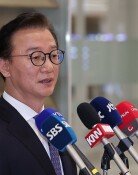Japan’s steel takeover shows persistence and strategy
Japan’s steel takeover shows persistence and strategy
Posted July. 05, 2025 07:07,
Updated July. 05, 2025 07:07
"Hashimoto Eiji, chairman of Nippon Steel, showed unwavering determination even when the deal was on the verge of collapse."
That was how the Washington Post described the Japanese steelmaker’s acquisition of U.S. Steel in its June 25 article titled “Inside Nippon Steel’s bruising efforts that paved the way to buying U.S. Steel.” Nippon Steel announced its plan to acquire U.S. Steel in December 2023, and 18 months later, on June 13, the Trump administration approved the deal.
The takeover is drawing attention not only for its scale but also because it represents how Japan’s signature perseverance and tactical know-how broke through strong political headwinds, coinciding with ongoing U.S.-Japan tariff negotiations. Many initially viewed the acquisition as unlikely, given America’s growing protectionism and U.S. Steel’s status as a symbol of national industry. Labor unions and politicians cited national security concerns and opposed the sale. Former President Joe Biden blocked it earlier this year, and even Donald Trump posted on Truth Social last December, “I am totally against the sale of what was once the great and powerful U.S. Steel to a foreign company, in this case Nippon Steel.”
Nippon Steel and the Japanese government managed to turn the situation around by pledging to invest $11 billion by 2028, a move that effectively addressed Trump's hunger for foreign investment. Earlier, Trump’s tariff war had triggered a sharp drop in both the New York Stock Exchange and U.S. Treasury prices, sparking strong backlash at home and abroad. In response, Trump had boldly claimed that tariffs would bring jobs and manufacturing back to the United States. Against this backdrop, Nippon Steel’s narrative that a 50 percent tariff prompted it to invest heavily in the U.S. fit right into that political messaging.
Another key move was granting Trump a so-called “golden share,” which allows veto power over decisions such as the company’s headquarters location or production shifts. While some critics raised concerns about political interference, others viewed it as a clever way to alleviate American anxiety over the loss of an iconic firm founded by Andrew Carnegie in 1901.
The Japanese government and private sector also collaborated closely to win over the U.S. administration and political circles. According to the Washington Post, Japanese Prime Minister Shigeru Ishiba gathered information and crafted arguments ahead of his summit with Trump in February. Immediately afterward, Trump described the deal as “an investment, not a mere acquisition,” signaling openness to cooperation. William Chu, a Japan analyst at the Hudson Institute, praised Ishiba’s approach as “very smart” and said it “opened the door to a much bigger deal.”
While Ishiba focused on convincing Trump, Nippon Steel worked on the ground, meeting with local lawmakers and unions to argue that the acquisition would lead to investment, advanced technologies, and job creation. The company also spent over $5 million to hire top lobbying firm Akin Gump and brought in former Secretary of State Mike Pompeo as an adviser.
Japan’s unified and strategic effort offers a compelling lesson for South Korea. As Korean companies and the government brace for Trump’s next round of tariff measures, they may want to take a page from Nippon Steel’s disciplined, coordinated, and persistent playbook.







